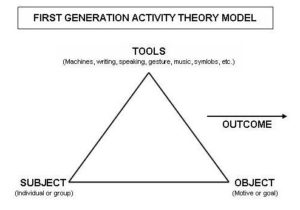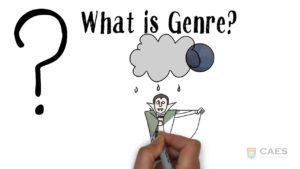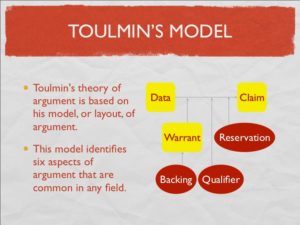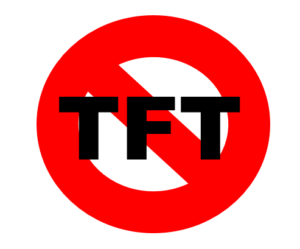The holiday season often prompts reflection, doesn’t it?

We think of past holiday functions with family and friends, family and friends who have passed, and as academics, we look back on the semester—our students, our syllabi, ourselves—and try to convince our inner teacher that “we’ll get it right next semester.”
With the semester and the year coming to a close, this holiday season is particularly special for me, as I am 38 weeks and two days pregnant with my first child as of today. Needless to say, I’m a melting pot of emotions, I can’t reach my toes, and I’m ready to get my pre-pregnancy body back, but aside from all that, I’ve spent the last nine months reflecting on my childhood and my mother’s parenting choices and considering what I’ll do the same and what I’ll do differently to ensure I “get it right” with my own child (as if that’s possible).
So it’s ironic to me that this final ENGL 810 prompt encourages me to look back on what I’ve learned this semester and consider what contributions I will make to my field in the future. In doing so, I’ve realized that I really what to get it right—how I position myself as an academic, that is—but I have a long way to go. My main research interest is in transfer, but for this class semester, I needed a broader scope to focus on for a subdiscipline, so I have been looking at writing across the curriculum (WAC) and a little bit of how WAC informs discussions of transfer.
David Russell has been key in my understanding of WAC and transfer. He deals with the history of WAC in his work “American Origins of the Writing-across-the-Curriculum Movement.”
It’s here that he indicates that the origins of WAC date back to the late nineteenth century and are a response to the progressive education that emerged from an industrialized society. We were able to gather this understanding from the readings we did in McComsky and Lauer, where we discussed the building pressure between the increased specialization of knowledge and professional work that was needed. Pressure still exists, but a different kind, and as I consider my role in the WAC field, it will be very important for me to emphasize the need for cultivating students to become effective citizens to alleviate the pressure of an unpredictable economy as well as unpredictable global tensions. Part of this involves developing curriculum that enables students to communicate effectively in both written and verbal contexts, but part of this also involves helping students understand the interrelatedness of what they do both inside and outside of the classroom.
and are a response to the progressive education that emerged from an industrialized society. We were able to gather this understanding from the readings we did in McComsky and Lauer, where we discussed the building pressure between the increased specialization of knowledge and professional work that was needed. Pressure still exists, but a different kind, and as I consider my role in the WAC field, it will be very important for me to emphasize the need for cultivating students to become effective citizens to alleviate the pressure of an unpredictable economy as well as unpredictable global tensions. Part of this involves developing curriculum that enables students to communicate effectively in both written and verbal contexts, but part of this also involves helping students understand the interrelatedness of what they do both inside and outside of the classroom.
David Russell’s work on activity theory has also informed my understanding of WAC and transfer. He uses this theory to analyze human behavior and consciousness in terms of an activity system. Activity systems are social and negotiable, and as such, every activity system is unique. It’s for this reason, learners often struggle to apply the skills that were learned in one activity system to another activity system due to their inability to adapt those skills. While every activity system is unique, learners often fail to recognize the similarities between them. As a scholar, activity theory helps me understand how the rhetorical situation of my classroom works and enables me to negotiate it more effectively. Thus, in the future, I see myself drawing on this theoretical knowledge to build a case for WAC and transfer at my institution.
Epistemologically, I align myself with social constructivism, “wherein knowledge is understood to be dynamic, provisional, and developed and mediated socially as people operate within various ‘communities’ of knowledge.” Psychologist Lev Vygotsky, scientist Thomas Khun, and rhetorician Kenneth Bruffee—though they come from different disciplinary backgrounds—have informed my understanding of social constructivist epistemology. Ultimately, understanding social constructivism allows me to make the teaching and learning experience transparent, which is essential to successful transfer as students leave my English classroom and enter into classrooms of other disciplines. But further, drawing on social constructivism will make me a more effective scholar and colleague, as I tackle questions about WAC and transfer at my institution.
For WAC scholars in general, WAC remains to be a challenging pedagogy to assess because WAC looks different at every institution. In assessment, scholars seek to determine what is best practice for their program, but that doesn’t necessarily mean that best practice for one program will be the same for another program. This has been an issue that has surfaced at my institution, where we have been under a QEP and looking to other institutions to determine where and how we want to align ourselves in order to promote a stronger interdisciplinary research focus. Herein lies a main area of study for me and potential contribution moving forward: How can we adapt a WAC curriculum that is effective for our institution while still cultivating effective citizens? And more broadly, how can we utilize WAC to promote transfer not only across the curriculum horizontally, but vertically as well?
I find my questions about the field and what it has in store for me to be parallel to my questions about child-rearing and the potential of the little one inside me. Perhaps I will cultivate an effective citizen at home and figure out how to transfer what I learn from him or her to my classroom. Either way, I recognize the value of reflection during all times of the year. I just hope my reflection begins to lead to me to some answered questions before I generate too many more new ones.
References
Hewett, B. and Ehmann, C. (2004). Preparing educators for online writing instruction. Urbana, IL: NCTE.
Russell, D. (1995). Activity theory and its implications for writing instruction. In J. Petraglia (Ed.), In Reconceiving writing, rethinking writing instruction (51-78). Hillsdale, NJ: Erlbaum.

 current president-elect will continue to do so long after inauguration day in January. The debates in the field of English over foundations, theories, practices, and approaches likewise carry on. And, like politics, our English-related debates have developed over decades and continue to persist. Literary studies, for example, oppresses composition with its humanist approach to pedagogy, thereby deeming literary studies as superior and composition as “a barely tolerated stepchild (cited in Gaillet, p. 164). Tensions persist, but in the midst of them, we—
current president-elect will continue to do so long after inauguration day in January. The debates in the field of English over foundations, theories, practices, and approaches likewise carry on. And, like politics, our English-related debates have developed over decades and continue to persist. Literary studies, for example, oppresses composition with its humanist approach to pedagogy, thereby deeming literary studies as superior and composition as “a barely tolerated stepchild (cited in Gaillet, p. 164). Tensions persist, but in the midst of them, we—
 instructional strategies to further support transfer (e.g. student understanding of context in classes outside of and beyond FYC). These benefits, however, can only achieve their potential through communication and cooperation across the disciplines. So with such potential benefits that could result from WAC, I can’t help but wonder why the disciplines remain divided. Why do we resist each other? Or better yet, why do other fields (English and non-English) continue to resist composition? It’s ironic to me that the university often prides itself in its interdisciplinarity, but when it comes to reaching across the aisle to a different discipline, power often takes priority over cooperation.
instructional strategies to further support transfer (e.g. student understanding of context in classes outside of and beyond FYC). These benefits, however, can only achieve their potential through communication and cooperation across the disciplines. So with such potential benefits that could result from WAC, I can’t help but wonder why the disciplines remain divided. Why do we resist each other? Or better yet, why do other fields (English and non-English) continue to resist composition? It’s ironic to me that the university often prides itself in its interdisciplinarity, but when it comes to reaching across the aisle to a different discipline, power often takes priority over cooperation. While over 200,000 American troops were fighting abroad in the Vietnam War by the 1970s, American education at home was taking a shift toward science, technology, engineering, and math studies (STEM) in order to better prepare a workforce for post-industrial society. Writing education, as a result, also shifted, seeking to identify pedagogical approaches for getting students to think about the content in their various courses and the interrelatedness of writing between them. According to Kevin Eric DePew, Associate Professor of English at Old Dominion University, Writing Across the Curriculum (WAC) emerged as a product of the 70s and a response to this writing studies need: “Though they weren’t using the acronym STEM yet, you had the sense of making everything very STEM-like, or practical, including writing” (personal communication, October 26, 2016). In a post-industrial society in which services were dependent upon intelligent designers and users of technology, practicality in writing meant that the consumers, or students, would be able to see the usefulness and transferability of their writing skills across contexts.
While over 200,000 American troops were fighting abroad in the Vietnam War by the 1970s, American education at home was taking a shift toward science, technology, engineering, and math studies (STEM) in order to better prepare a workforce for post-industrial society. Writing education, as a result, also shifted, seeking to identify pedagogical approaches for getting students to think about the content in their various courses and the interrelatedness of writing between them. According to Kevin Eric DePew, Associate Professor of English at Old Dominion University, Writing Across the Curriculum (WAC) emerged as a product of the 70s and a response to this writing studies need: “Though they weren’t using the acronym STEM yet, you had the sense of making everything very STEM-like, or practical, including writing” (personal communication, October 26, 2016). In a post-industrial society in which services were dependent upon intelligent designers and users of technology, practicality in writing meant that the consumers, or students, would be able to see the usefulness and transferability of their writing skills across contexts.
 represented in WAC is rhetorical theory, which Bazerman and Russell (1994) discuss in their introduction to Landmark Essays. WAC was evident in the rhetorical traditions of the Ancient Greeks as it is today, and for Bazermen and Russell, there is a long tradition in rhetorical theory to support the reasons we have WAC.
represented in WAC is rhetorical theory, which Bazerman and Russell (1994) discuss in their introduction to Landmark Essays. WAC was evident in the rhetorical traditions of the Ancient Greeks as it is today, and for Bazermen and Russell, there is a long tradition in rhetorical theory to support the reasons we have WAC. In
In 

 The authors note that the evidence from their study suggests that the majority of the twelve students improved their ability to articulate claims and support them with evidence in FYC. In the WAC courses, the authors found that “[w]hile the students in this study encountered in WAC a diverse variety of genres, most of those genres required them to support claims with evidence. In this regard, students appeared to benefit from related instruction in FYC. That is to say, students’ development of ability to articulate and support claims in FYC appeared directly related to their ability to do so in their later WAC courses” (p. 46). But after reading this article, I have several questions for the authors about their
The authors note that the evidence from their study suggests that the majority of the twelve students improved their ability to articulate claims and support them with evidence in FYC. In the WAC courses, the authors found that “[w]hile the students in this study encountered in WAC a diverse variety of genres, most of those genres required them to support claims with evidence. In this regard, students appeared to benefit from related instruction in FYC. That is to say, students’ development of ability to articulate and support claims in FYC appeared directly related to their ability to do so in their later WAC courses” (p. 46). But after reading this article, I have several questions for the authors about their 

 Condon’s and Rutz’s assertion begs a major question in the field: Does goal-oriented progress, or the use of outcomes, increase the tension that exists between the disciplines?
Condon’s and Rutz’s assertion begs a major question in the field: Does goal-oriented progress, or the use of outcomes, increase the tension that exists between the disciplines?